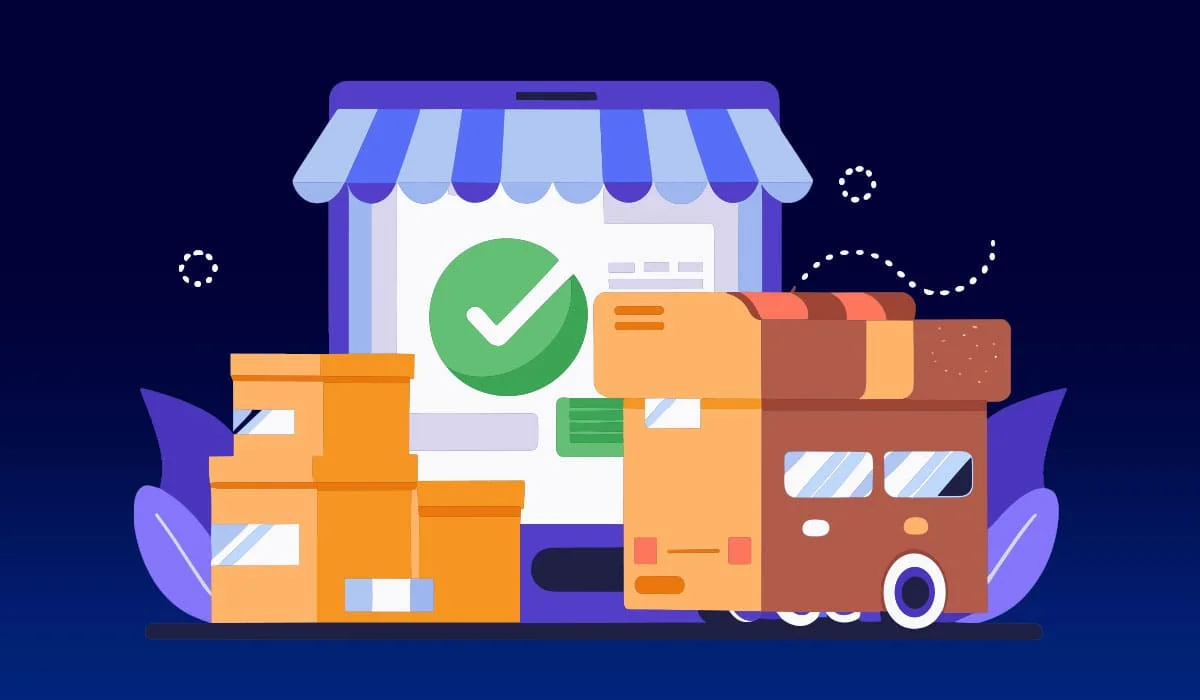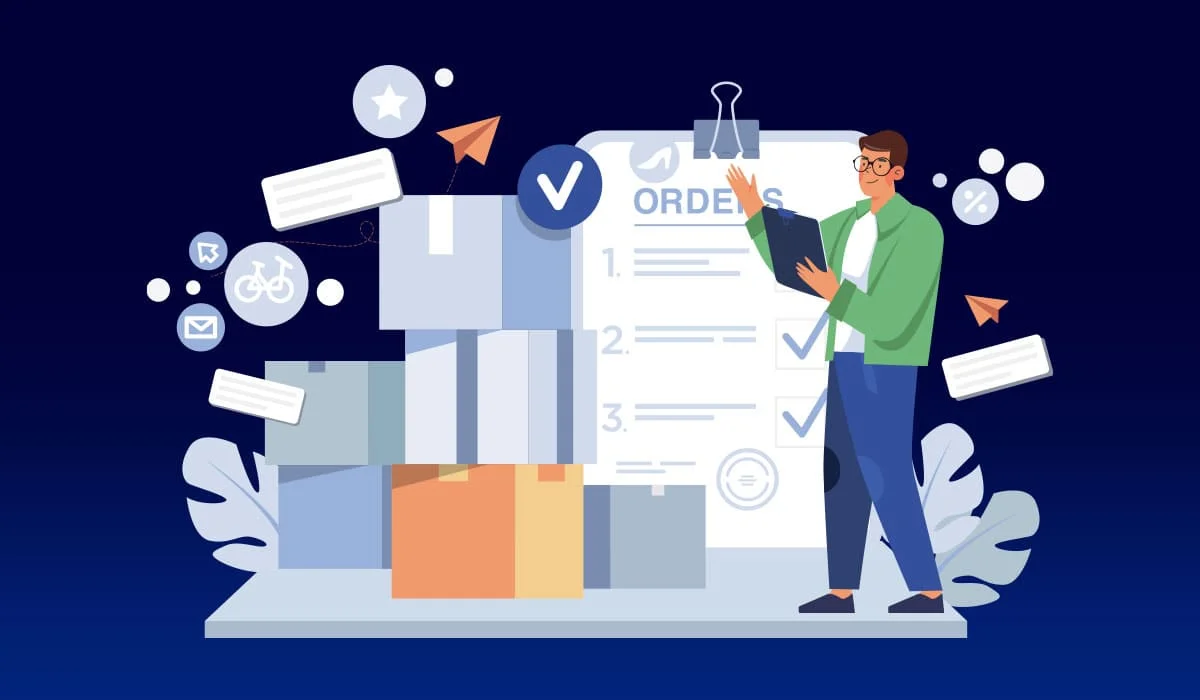It is a critical aspect of supply chain management that involves efficiently and effectively managing the flow of goods to ensure optimal levels of stock.
It involves understanding the demand patterns, supply constraints, storage costs, and other factors that affect inventory management.
Optimizing Inventory Levels with Software Solutions is crucial for businesses of all sizes across various industries, to meet customer demands, reduce costs, and increase profitability.
In this blog, we will explore the challenges of stockouts and overstock, the benefits of inventory optimization strategies, and how inventory management software can streamline these processes.
In short, after reading this blog you will understand the importance of Optimizing Inventory Levels with Software Solutions like EBR for effective workflow.
Content Index

Understanding Stockouts and Overstock
Stockouts and Overstock are two sides of the same coin in inventory management.
Stockouts occur when businesses have insufficient stock to meet customer demands.
Overstock, on the other hand, has excessive inventory levels beyond what is necessary.
Both scenarios come with their own set of challenges that can impact a company’s stability.
Challenges of Stockouts
Stockouts can have significant consequences for businesses, impacting customer satisfaction, sales opportunities, and overall financial health.
Let’s understand the key challenges associated with stockouts:
Customer Dissatisfaction
Stockouts result in customers being unable to purchase the products they desire.
This can lead to frustration and dissatisfaction, as customers may need to look elsewhere to fulfill their needs.
Frustrated customers may not only take their business elsewhere but also share their negative experiences with others, potentially damaging the company’s reputation.
Nowadays, customers easily share their reviews through Social Media Platforms, deepening the impact of stockouts.
Customer dissatisfaction can have long-lasting impacts on brand loyalty and customer retention.
Lost Sales Opportunities
When customers encounter stockouts, businesses lose the opportunity to make sales.
This can be particularly harmful during peak seasons or when there is high demand for certain products.
Lost sales opportunities directly impact revenue and can result in missing out on potential profits.
Additionally, losing customers to competitors during stockouts can also lead to a loss of market share.
Rush Orders and Expedited Shipping Costs
Businesses often use rush orders and expedited shipping methods to avoid stockouts and meet customer demands.
These methods come with additional costs, such as premium shipping fees and increased labor expenses to expedite processing and fulfillment.
These additional expenses can reduce profit margins and impact the overall financial performance.
Inaccurate Demand Forecasting
Stockouts are often a consequence of inaccurate demand forecasting.
Without accurate predictions of customer demands, businesses may fail to maintain adequate stock levels to meet expected demand.
Inaccurate demand forecasting can result from factors like insufficient historical data analysis or a lack of market insights.
It can also arise from a failure to consider external factors such as promotions or market trends.
Inaccurate forecasting can lead to understocking and stockouts, adversely affecting customer satisfaction and revenue.
Inventory Holding Costs
Stockouts not only impact sales opportunities but can also increase inventory holding costs.
When products are out of stock, businesses may need to hold additional safety stock or maintain larger order quantities to avoid future stockouts.
Holding excess inventory incurs storage costs, tying up capital and limiting cash flow.
Additionally, increased inventory holding also requires additional warehouse space, which adds to operational costs.
Balancing stock levels to avoid stockouts while minimizing inventory holding costs is a delicate challenge for businesses.
Challenges of Overstock
Overstocking can cause serious challenges for businesses across various industries.
From financial loss to operational issues, managing excess inventory requires strategic planning and effective solutions to mitigate risks.
Some of the serious challenges are:
Obsolescence
One of the significant challenges of overstock is the risk of obsolescence.
Holding excess inventory for an extended period increases the likelihood of products becoming outdated or obsolete.
This is particularly true in industries where products have a shorter lifecycle or where technological advancements quickly render older versions obsolete.
Inventory obsolescence causes significant losses for businesses by preventing the sale of products, reducing profitability, and limiting the use of valuable financial resources.
Storage Costs
Overstocking also poses a challenge in terms of storage costs.
Keeping surplus inventory requires additional warehouse or storage space, which can be costly for businesses.
Renting or owning warehouse space and investing in equipment, such as shelves and pallets, adds significant expenses to the business’s overhead.
Moreover, storing excess inventory for an extended period also incurs costs related to utilities, staff, insurance, and inventory management systems.
Businesses need to carefully consider the balance between meeting customer demand and incurring excessive storage costs.
Reduced Cash Flow
Overstocking ties up valuable capital that could otherwise be invested in other areas of the business.
When a significant amount of a company’s resources is locked in overstocking, it restricts its ability to invest in marketing, research and development, and other growth initiatives.
This reduction in available funds can cause troubles in a business’s ability to respond to market changes and take advantage of new opportunities.
This ultimately affects its competitive position.
Increased Risk of Damage or Loss
Another challenge associated with overstock is the increased risk of damage or loss.
The longer inventory is held, the more vulnerable it becomes to various risks, such as theft, damage due to improper storage or handling, and deterioration.
Perishable goods, such as food items, are prone to spoilage if stored for too long.
These risks not only result in financial losses but can also lead to reputational damage if customers receive damaged or expired products.
Difficulty in Selling Slow-Moving Items
Overstock often includes slow-moving or obsolete items that are challenging to sell.
These items may have a limited market demand or face intense competition from newer and more innovative alternatives.
Moreover, customers’ preferences or market trends may change, making it difficult for businesses to find buyers willing to purchase excess inventory.
This further deepens the financial burden on the business and adds to the challenge of managing overstock effectively.
Inventory Optimization Strategies
Implementing inventory optimization strategies can help businesses strike the right balance between maintaining optimal stock levels and minimizing costs.
One way to streamline this process is by optimizing Inventory Levels with Software Solutions.
This can significantly benefit businesses by improving operational efficiency, reducing storage costs, and enhancing customer satisfaction.
Now, let’s explore some key inventory optimization strategies and how software solutions can help in optimizing inventory levels.
Just-in-time (JIT) inventory management
Just-in-time inventory management is a popular strategy that focuses on receiving inventory just in time for production or customer demand, thereby reducing excess stock.
Software solutions play a vital role in JIT implementation by providing real-time visibility into inventory levels, automating order placements, and enabling seamless communication with suppliers.
These solutions track inventory movements and help businesses make informed decisions on when to order and how much to order, ultimately optimizing inventory levels and reducing carrying costs.
Economic Order Quantity (EOQ) calculations
Determining the Economic Order Quantity (EOQ) is a critical aspect of inventory optimization.
Software solutions equipped with EOQ calculation capabilities simplify this process.
By considering factors such as ordering costs, holding costs, and demand rates, these solutions calculate the optimal order quantity that minimizes total inventory costs.
Businesses can input relevant data into the software, and it will then generate EOQ values, enabling businesses to make data-driven procurement decisions to optimize inventory levels.
Demand Forecasting Techniques
Accurate demand forecasting is a vital aspect of inventory optimization.
By utilizing historical data, market trends, and other relevant information, businesses can predict future demand accurately.
Demand forecasting techniques such as time-series analysis, regression analysis, and market research can help businesses make informed decisions about stock replenishment and avoid overstock situations.
Implementing robust demand forecasting processes can minimize the risk of stockouts or excessive inventory, enhancing customer satisfaction and reducing costs.
Safety Stock and Reorder Point Determination
Safety stock refers to additional inventory held as a buffer to account for unexpected variations in demand or supply.
Determining the appropriate safety stock levels and reorder points is crucial for effective inventory management.
Safety stock helps businesses avoid stockouts and minimize the risk of losing sales due to unforeseen circumstances such as supplier delays or sudden increases in demand.
By considering factors like lead times, demand variability, and service level requirements, businesses can determine the optimal levels of safety stock and reorder points.
Benefits of Inventory Management Software
Implementing inventory management software can bring numerous benefits to businesses, particularly in optimizing inventory levels and enhancing overall efficiency.
By automating inventory tracking and monitoring, businesses can eliminate the need for manual processes and reduce the risk of human errors.
This automation allows for more accurate and up-to-date data, ensuring that businesses have a clear view of their inventory at any given time.
The real-time visibility provided by inventory management software is another significant advantage.
With the ability to access real-time information on inventory levels, businesses can make informed decisions regarding purchasing, restocking, and forecasting.
This visibility helps avoid overstocking or understocking, ultimately reducing carrying costs and minimizing stockouts, which can lead to lost sales opportunities.
Additionally, inventory management software often integrates seamlessly with other business systems, such as point of sale (POS), enterprise resource planning (ERP), and customer relationship management (CRM) systems.
This integration allows businesses to streamline their operations, improve efficiency, and enhance the overall customer experience.
By sharing data across different systems, businesses can gain valuable insights into inventory patterns, sales trends, and customer preferences, enabling them to make more informed decisions.
The benefits of inventory management software ultimately contribute to optimizing inventory levels and improving overall business performance.
With the right inventory management software, businesses can effectively manage their inventory, reduce costs, increase efficiency, and ultimately enhance customer satisfaction.
Therefore, businesses must consider implementing inventory management software as part of their operations strategy to effectively manage and optimize their inventory levels.
Optimizing Inventory Levels with Software Solutions presents an opportunity for businesses to revolutionize the way they handle their inventory management.
This empowers businesses to meet customer demands promptly and accurately, ultimately enhancing their profitability and competitiveness in the market.
While you are here go through our other inventory management-related blogs as well!





